Lawo .edge
2022

.edge is Lawo’s hyper-density SDI/IP conversion and routing platform.
Lawo’s fantastic R&D team created a powerful and flexible device. My challenge was to help to make it simple to understand, manage, and operate.
.edge integrates beautifully into Home, Lawo’s management platform for IP-based media infrastructures. We designed and built Home with devices like .edge in mind, carefully considering the many devices, workflows, and functionality we want to develop across the Lawo portfolio in future. Because of this careful forethought, .edge makes use of many of the same user workflows as many of Lawo’s other products, including the entire audio production product line. This simplifies things for users, as they don’t have to learn multiple ways to achieve common tasks, and simplifies development, as we don’t need to maintain multiple parallel design and development paths.
‘Call home’ is a simple but powerful feature. Pressing the ‘Call Home’ button on the .edge hardware will identify the device in the Home UI. This makes it trivial to identify the correct device, and reduce errors.
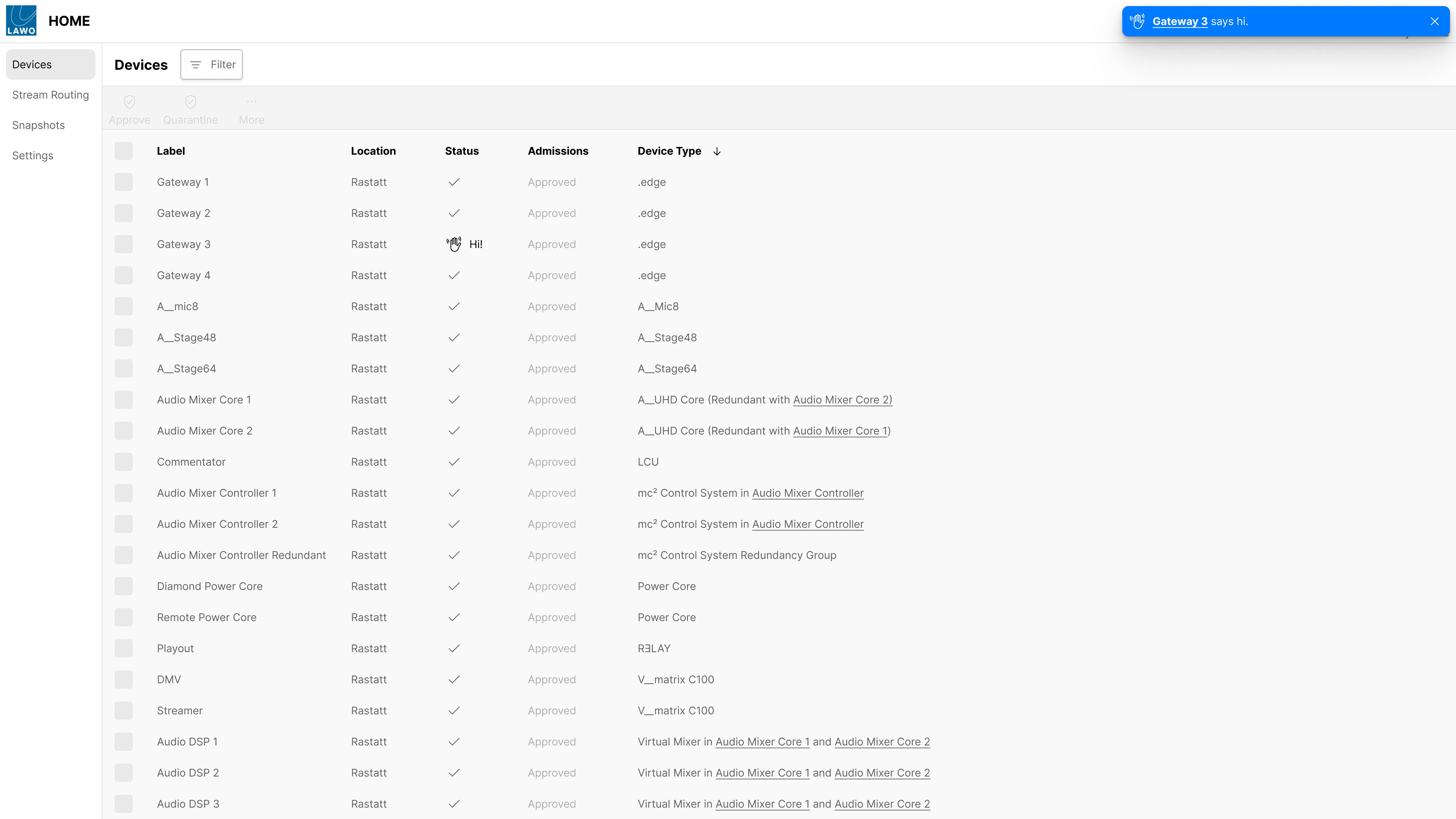
Using simple iconography and visual grouping, we make it clear how different physical SDI inputs and outputs relate to their IP senders and receivers. Home’s dynamic properties panels present appropriate parameters for whatever items you select.
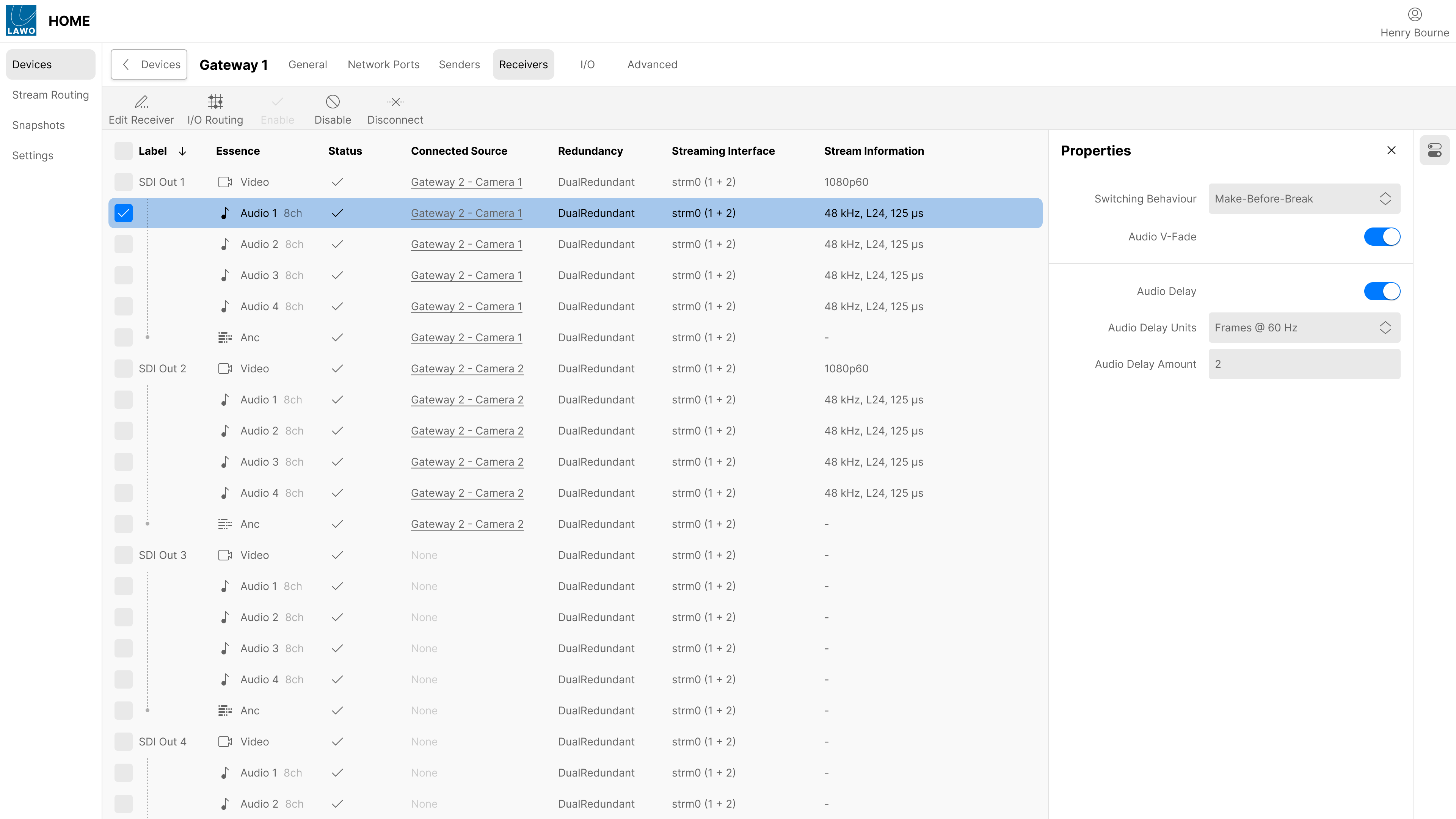
Here you can see the same dynamic properties panel used in a different context, for SDI Outputs.
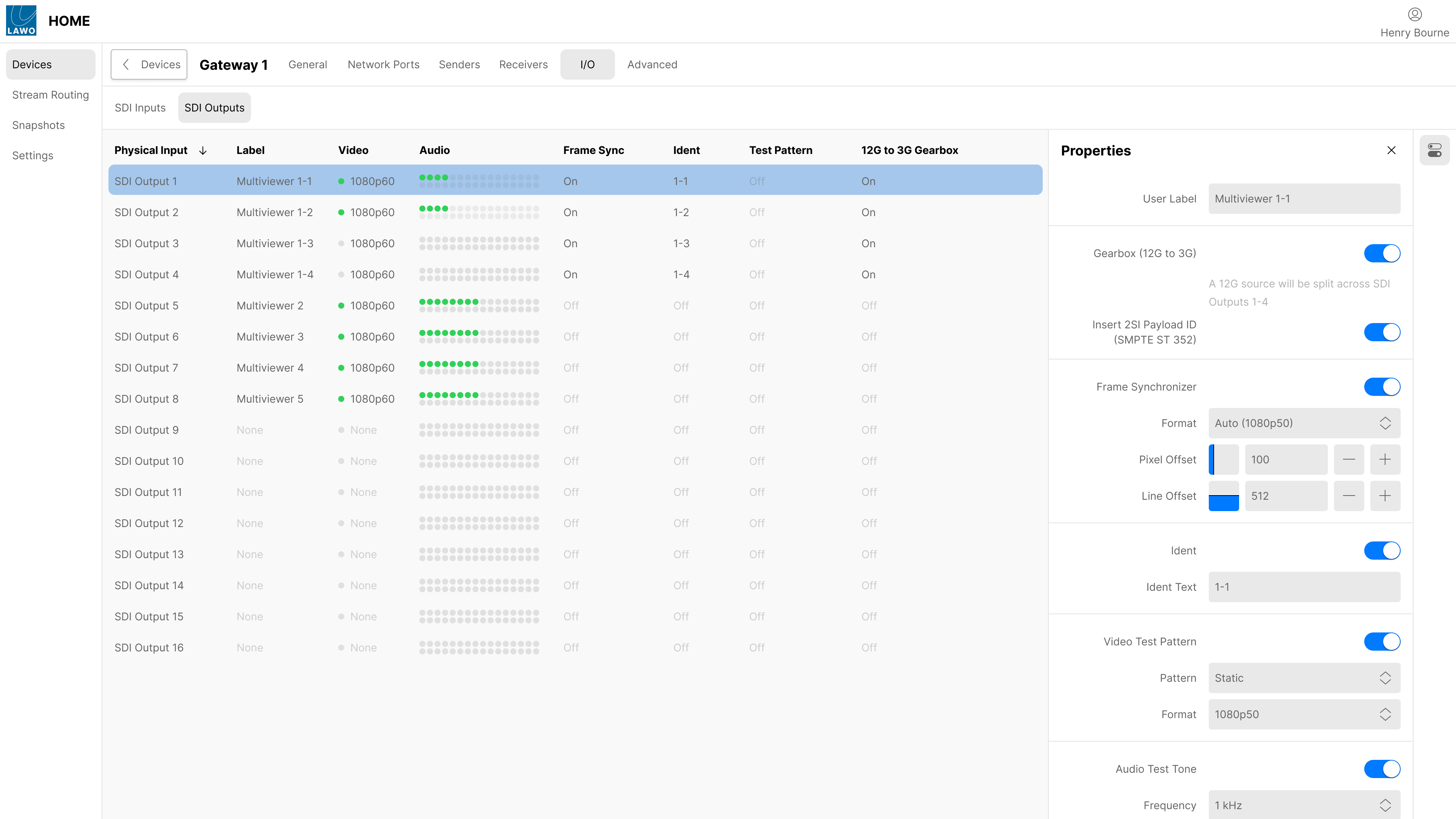
We made it intuitive to shuffle audio, using a clear and simple presentation that indicates the results of your actions before you commit to them, helping to reduce errors. This source and destination routing workflow is a reusable component that can be accessed in many appropriate places in the Home UI. Wherever it’s likley you’ll need to shuffle or route audio, this workflow will be available.
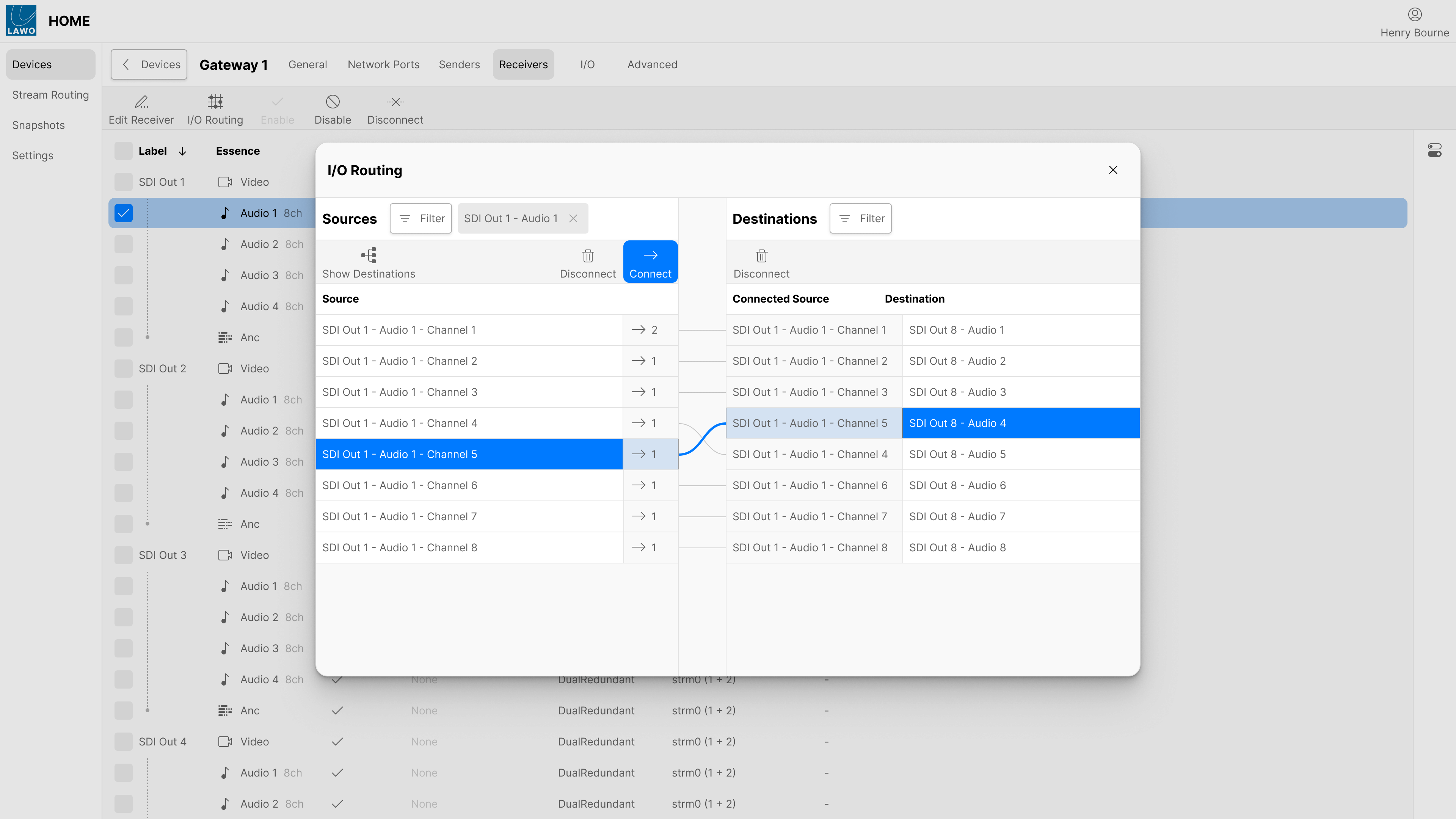
We made it simple to route multiple media essences that are part of the same source or destination signal, but it’s also possible to break out the individual essences and make more complex routes. We optimise for the most common workflows, but allow you to expose more complexity when required. This is one of the principles of LUX, Lawo’s design system, which allows for gradual exposure of complexity. You’ll also notice the same routing pattern as used in the audio shuffling example above.
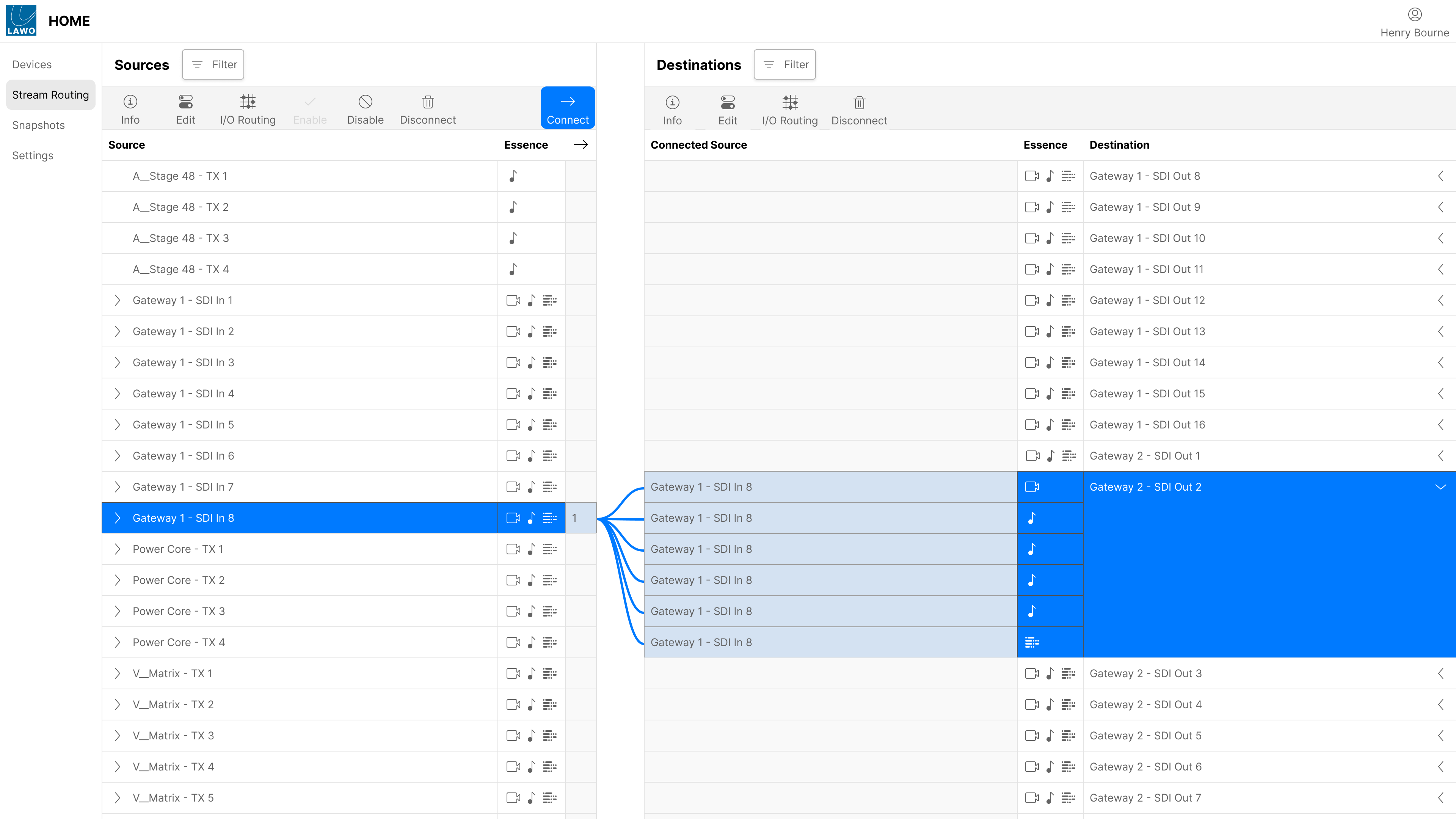
Go to lawo.com/products/home/ to learn more.